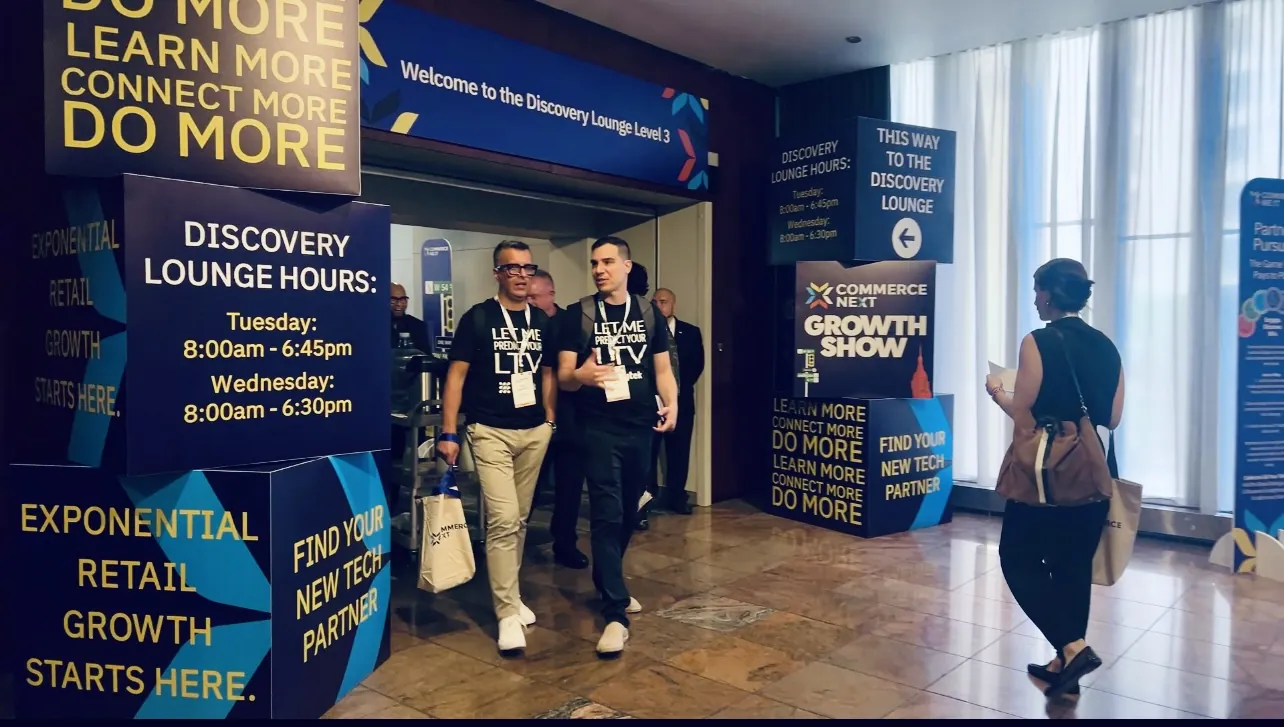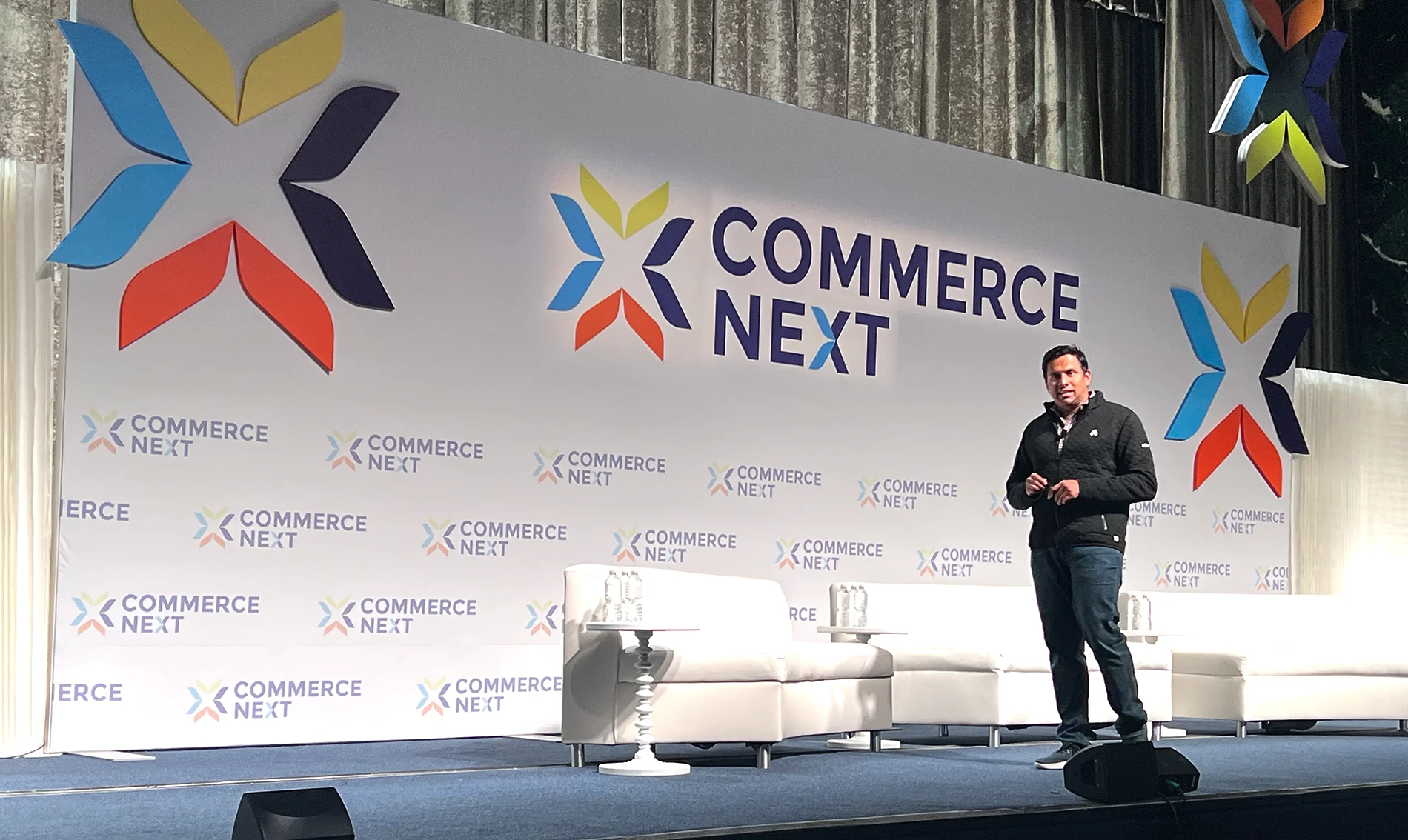It was 100 degrees in New York City, and the air conditioning at the Hilton was working overtime to keep up with a few thousand of us packed in for CommerceNext. Between iced coffees, hallway catch-ups, and dodging the heat wave on 6th Avenue, we actually learned a lot. Real conversations. Sharp insights. No fluff.
The best part? Getting to trade ideas with people actively shaping the space. Whether it was debating the future of retail media with direct mail experts, exploring personalization frameworks with platform partners, or talking loyalty over ramen and cappuccino runs, every conversation sharpened the picture. A lot of what’s in this recap came straight out of those real-time exchanges. The tech is moving fast, but the smartest strategies are still grounded in collaboration.
What stood out this year wasn’t the hype, but the clarity: our industry is shifting fast, and the brands that adapt now will be the ones that win. Here’s what I took away:

AI Moves From Buzzword to Business Tool
AI is no longer an experiment. It’s foundational. Nearly every session hit on how AI is reshaping the customer journey, from product recommendations to post-purchase follow-up. The key message: use AI with intention. Don’t just plug it in. Define the job it’s doing and measure it accordingly.
We’re seeing AI take the front seat in customer experiences. Chatbots are getting smarter. Personalization is becoming predictive. But the most forward-thinking brands are balancing automation with human oversight. It’s not about replacing people, it’s about giving teams leverage.
One theme that stuck with me was AI-to-AI commerce. Picture a near future where your shopping assistant talks to a retailer’s algorithm to finalize a purchase. It’s not science fiction anymore. That means our product data, descriptions, and logic need to be optimized not just for people, but for machines making decisions on their behalf.
Personalization Is Now Infrastructure
Personalization is no longer a side project. It’s a requirement. Consumers expect seamless, relevant experiences across all touchpoints. This means moving beyond demographic segments and into behavior-driven, real-time adaptations.
It starts with clean, unified data. If your systems don’t talk to each other, you’re not personalizing. One retailer shared how syncing quiz responses, purchase behavior, and customer service logs gave them a 360-degree view they could actually act on.
We also talked about zero-party data. Customers are willing to share preferences if they get something in return. Interactive tools like quizzes and preference centers are becoming essential for earning that data in a privacy-compliant way.

Privacy Isn’t a Roadblock, It’s a Strategy
The end of third-party cookies is no longer news. What matters now is how we respond. First-party and zero-party data are the future. And transparency is the differentiator.
Consumers want control. The brands that explain why they collect data and how they use it are building trust, not losing it. Someone said, “Privacy is a feature, not a compliance task” — and it landed.
More marketers are leaning into contextual targeting, owned channels, and value exchange. This isn’t a step backward. It’s a reset that favors creativity and brand equity over brute-force targeting.
Omnichannel Isn’t Optional
CommerceNext made one thing clear: the line between online and offline is gone. Customers expect every touchpoint to feel connected. This is where tools like the Talkable Wallet pass come in—blurring the boundary between digital engagement and real-world behavior. We saw strong interest from brands looking to bridge post-purchase moments with mobile-enabled rewards, geo-triggered prompts, and in-store referrals.
Wallet passes aren’t just a gimmick. They’re becoming a practical extension of your CRM—putting brand offers, loyalty hooks, and referral moments right into a shopper’s native device interface. We had some energizing conversations with partners on how this can become the connective tissue between their ecomm and physical presence.
Customers don’t think in channels. They just want it to work. That means we need tighter alignment between digital and in-store experiences. Things like real-time inventory visibility, cross-channel returns, and mobile tools that enhance brick-and-mortar visits are becoming standard.
One brand’s store associates use iPads to see online behavior before helping a shopper in-store. Another lets customers unlock exclusive digital content after an in-person purchase. It’s about meeting people where they are and removing friction.

Retail Media and Acquisition Shifts
CAC isn’t going down. What’s changing is where growth is coming from. Retail media networks were everywhere in the conversation. Brands are realizing they can reach high-intent shoppers directly on retailer sites — but it takes planning and smart measurement.
Influencer marketing also got a reality check. Performance matters more than follower count. And creators who genuinely love the brand still outperform paid endorsements. Authenticity is winning.
The Takeaway
We’re not in the age of shiny tools anymore. We’re in the age of operational excellence. AI, personalization, privacy, and omnichannel aren’t separate initiatives. They’re interconnected levers in a single strategy.
CommerceNext 2025 gave me more than ideas. It gave me momentum. We’ll be bringing these insights into our planning cycles immediately. The brands that act on these shifts now will be the ones leading by Q4. Let’s get to work.
About the Author:
Jeremy Foreshew is a full-stack marketer with deep expertise in customer-led growth. As Head of Marketing at Talkable, he helps DTC and eCommerce brands turn their customers into their most powerful acquisition channel. Jeremy writes about referral strategy, retention, and the future of word-of-mouth marketing. He has been featured in Forbes, TechCrunch, and HuffPost.




